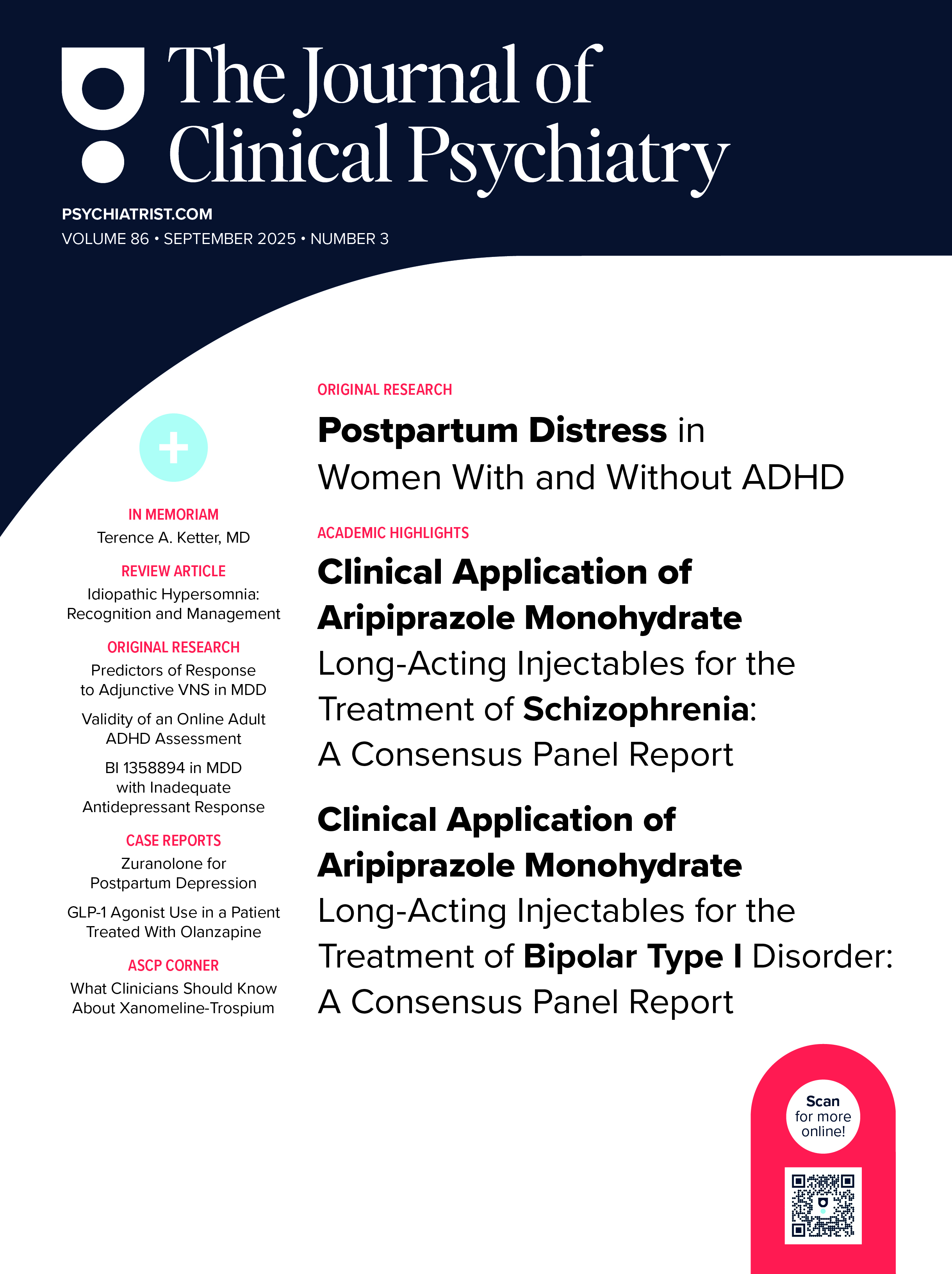Objectives. A growing number of atypical antipsychotics areavailable for clinicians to choose from in the treatment of psychoticdisorders. However, a number of important questionsconcerning medication selection, dosing and dose equivalence,and the management of inadequate response, compliance problems,and relapse have not been adequately addressed by clinicaltrials. To aid clinical decision-making, a consensus survey ofexpert opinion on the pharmacologic treatment of psychotic disorderswas undertaken to address questions not definitivelyanswered in the research literature.Â
Method. Based on a literature review, a written survey wasdeveloped with 60 questions and 994 options. Approximatelyhalf of the options were scored using a modified version of theRAND 9-point scale for rating the appropriateness of medicaldecisions. For the other options, the experts were asked to writein answers (e.g., average doses) or check a box to indicate theirpreferred answer. The survey was sent to 50 national experts onthe pharmacologic treatment of psychotic disorders, 47 (94%) ofwhom completed it. In analyzing the responses to items rated onthe 9-point scale, consensus on each option was defined as a nonrandomdistribution of scores by chi-square “goodness-of-fit”test. We assigned a categorical rank (first line/preferred choice,second line/alternate choice, third line/usually inappropriate) toeach option based on the 95% confidence interval around themean rating. Guideline tables indicating preferred treatmentstrategies were then developed for key clinical situations.Â
Results. The expert panel reached consensus on 88% of theoptions rated on the 9-point scale. The experts overwhelminglyendorsed the atypical antipsychotics for the treatment of psychoticdisorders. Risperidone was the top choice for first-episodeand multi-episode patients, with the other newer atypicals ratedfirst line or high second line depending on the clinical situation.Clozapine and a long-acting injectable atypical (when available)were other high second line options for multi-episode patients.The experts’ dosing recommendations agreed closely with thepackage inserts for the drugs, and their estimates of dose equivalenceamong the antipsychotics followed a linear pattern.
The experts considered 3-6 weeks an adequate antipsychotictrial, but would wait a little longer (4-10 weeks) before makinga major change in treatment regimen if there is a partialresponse. The experts recommended trying to improve responseby increasing the dose of atypical and depot antipsychoticsbefore switching to a different agent; there was less agreementabout increasing the dose of conventional antipsychotics beforeswitching, probably because of concern about side effects athigher doses. If it is decided to switch because of inadequateresponse, risperidone was the experts’ first choice to switch to,no matter what drug was initially tried. Although there wassome disparity in the experts’ recommendations concerninghow many agents to try before switching to clozapine, theexperts’ responses suggest that switching to clozapine should beconsidered after failure to respond to two atypical antipsychotics.Clozapine was also the antipsychotic of choice forpatients with suicidal behavior. When switching oral antipsychotics,the experts considered cross-titration the preferredstrategy. When switching to an injectable antipsychotic, theexperts stressed the importance of continuing the oral antipsychoticuntil therapeutic levels of the injectable agent areachieved.Â
The experts considered psychosocial interventions the firstchoice strategy for partially compliant patients, with pharmacologicinterventions the first choice for patients with clear evidenceof noncompliance. However, because it can be difficult todistinguish partially compliant from noncompliant patients, theeditors recommended combining psychosocial and pharmacologicinterventions to improve compliance whenever possible.When patients relapse because of compliance problems or ifthere is any doubt about compliance, the experts recommendedthe use of a long-acting injectable antipsychotic and wouldselect an injectable atypical when this option becomes available.The experts would also consider using an injectable atypicalantipsychotic (when available) in many clinical situations thatdo not involve compliance problems.Â
The experts stressed the importance of monitoring for healthproblems—especially obesity, diabetes, cardiovascular problems,HIV risk behaviors, medical complications of substanceabuse, heavy smoking and its effects, hypertension, and amenorrhea—in patients being treated with antipsychotics.Â
Although many patients are prescribed adjunctive treatments,multiple antipsychotics, and combinations of differentclasses of drugs (e.g., antipsychotics plus mood stabilizers orantidepressants) in an effort to enhance response, the expertsgave little support to any of these strategies, with the exceptionof antidepressants for patients with dysphoria/depression, antidepressantsor ECT for patients with suicidal behavior, andmood stabilizers for patients with aggression/violence.
When asked about indicators of remission and recovery, theexperts considered acute improvement in psychotic symptomsthe most important indicator of remission, whereas they consideredmore sustained improvement in multiple outcomedomains (e.g., occupational/educational functioning, peer relationships,independent living) important in assessing recovery.Â
Conclusions. The experts reached a high level of consensus onmany of the key treatment questions in the survey. Within thelimits of expert opinion and with the expectation that futureresearch data will take precedence, these guidelines providedirection for addressing common clinical dilemmas that arise inthe pharmacologic treatment of psychotic disorders. They canbe used to inform clinicians and educate patients regarding therelative merits of a variety of interventions. Clinicians shouldkeep in mind that no guidelines can address the complexitiesinvolved in the care of each individual patient and that soundclinical judgment based on clinical experience should be used inapplying these recommendations.
This PDF is free for all visitors!

